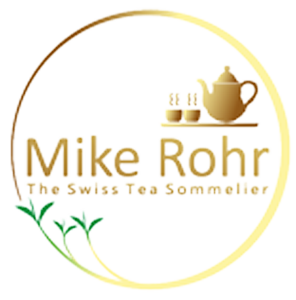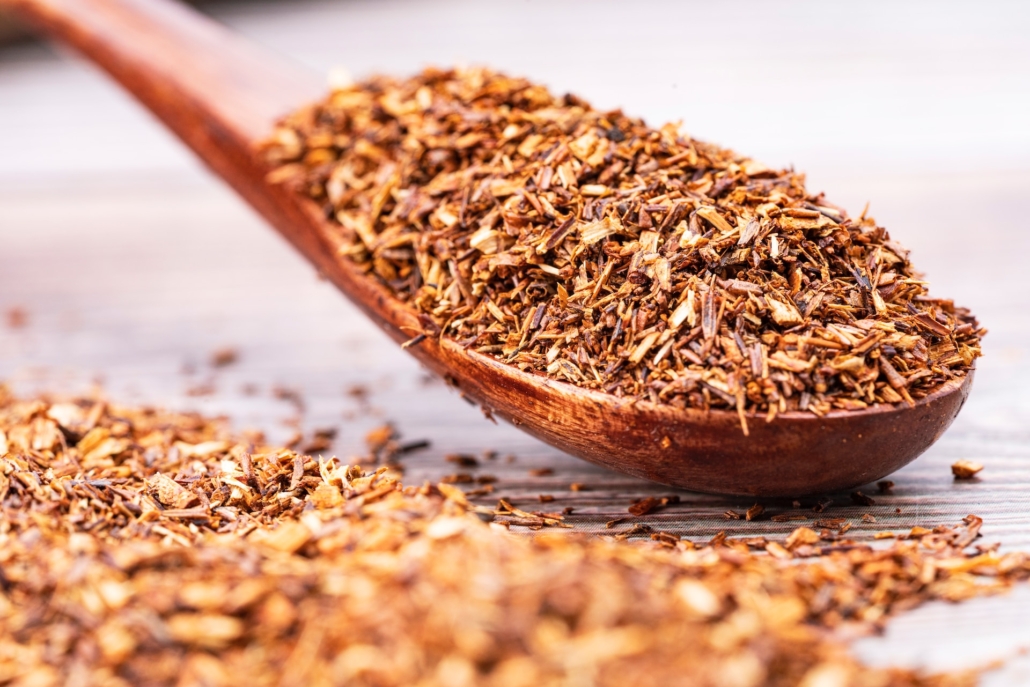Rooibos Is Not a Tea
This news may hit many a Swiss tea drinker hard: Rooibos tea is NOT a tea ! The same applies to Psoralea (rooibos) and Aspalathus Linearis (rooibos)
All tea comes from the Camellia Sinensis plant. (See https://www.theswissteasommelier.ch//tea-talk/). and Camellia Sinensis)
This insight will neither affect the taste of rooibos soaked in hot water nor Shakespeare’s age-old adage that “A rooibos by any other name would smell as sweet” when you are being wooed sitting on a balcony in Verona (Romeo & Juliet, II.2). The point here is not about being petty or making a fuss about the definition of tea. It’s more that if you accept rooibos-in-hot-water as tea, then one has to start wondering what makes tea. Anything that you stir into hot water ? Hot water and a splash of milk ?? (Asterix Apud Britannos).
Apart from the fact that it is illegal in Switzerland to advertise food in connection with health claims. It is unhelpful if abroad-based healthline.com explains that “Rooibos is a herbal tea and is not related to black or green tea”. Rooibos is not related to white tea either. Nor to yellow tea, blue tea, post-fermented tea (aka dark tea) or fish sauce. Herbal teas are simply not teas. They are infusions, and it would greatly help to call them infusions ;-) 😉
Having said this and cynical comments aside, there are a few interesting connections between rooibos and (white, green, yellow, blue, black, post-fermented) tea:
Rooibos infusions are made from the (green) leaves of the rooibos (The clue lies in the translation from Afrikaans, where it means “red bush”). Tea is made from the suitable varieties of the bush of the Camellia Sinsensis. It would actually grow into a tree if left to its own devices, but is usually kept in bush format to enable a plucking table for the tea pickers.
The Dutch settlers popularised the African brew during 17th century. Snatching Java from Portuguese conquerors enabled the Dutch to transport tea on the long sea-journey from China via the island of Java to the Netherlands (1606). The first datable reference to tea in England stems from 1658 (only a few years after the first coffee houses had opened in London and at a surprisingly much later point in time than many other countries), and it was effectively the dowry of Portuguese Princess Catherine of Braganza (Her portrait can still be found in the National Portrait Gallery off history-laden Trafalgar Square) that she brought with her, which included a chest of tea, when she married freshly-returned King Charles II that made tea popular to the effect that it became (enormously!!!) big business for what had started as the (Dutch) East India Company. A variety of sources point out that Britain had already seen tea before her arrival and that she brought loose-leaf tea; as the tea bag was only invented in around 1905, it must have been loose-leaf tea that Charles II’s future wife brought with her. In any case, it is quite safe to say that under Cromwell the pleasure derived from drinking tea would probably have been unthinkable.
Both the green leaves of the Rooibos and the Camellia Sinensis are exposed to oxidation. In the case of the Camellia Sinensis, the longer you let the oxidation process run, the more the leaves will turn from green into brown/black (i.e. they go – with the help of a few additional processing steps – from green tea to blue tea (a historically strange choice of colour as blue tea is not blue) to black tea, whereas the Rooibos leaves turn reddish under oxidation. (Yes, oxidation, not fermentation).
Rooibos infusions and real tea are graded, but the effects of grading are surprisingly polar: The main bulk of quality Rooibos is exported to Germany at a comparatively high price. The locals mainly snatch up the lower quality. In China, avid tea drinkers buy up 80%-90% of the tea produced in China, particularly the good and excellent qualities. The top teas hardly ever make it to Europe, and if they do, we snuff at them because we don’t understand their eye-watering prices let alone appreciate such tea.
Rooibos infusions make good dying agents, for example for colouring Easter eggs. So does tea; in addition to Easter eggs, real tea can also be used to make wonderfully-marbled Chinese tea eggs (Here is a recipe, though the less elaborate version that only uses black tea works fine for a start: https://redhousespice.com/tea-eggs/)
Sources:
- https://en.wikipedia.org/wiki/Rooibos
- https://anon.healthline.com/
- https://www.comedix.de/lexikon/db/tee.php
- https://www.teatulia.com/tea-varieties/what-is-rooibos.htm (But don’t believe everything you read. Tea is clearly more than just 1’000-plus years old. There can be no doubt that Emperor Shennong would suffer a stomach-turning experience if he were able to read the beginning of this article).
- https://www.tea.co.uk/history-of-tea#:~:text=By%20the%20turn%20of%20the,shipped%20from%20China%20to%20Holland.
- https://lifestyle.theeastindiacompany.com/collections/signature-collection
- https://redhousespice.com/
- https://eviehawtrey.com/2022/04/07/no-tea-no-shade-king-charles-iis-queen-did-not-introduce-tea-to-england-but-she-made-it-fashionable/
- https://www.queensroyalsurreys.org.uk/queen_of_reg/catherine.shtml



